Award-Winning Chicago Personal Injury Lawyer - Securing Justice
for Illinois Injury Victims - Over $450 Million Recovered
If you or a loved one suffered harm from a dangerous or defective product, a Chicago product liability lawyer at Rosenfeld Injury Lawyers can help you take legal action. Our legal team has years of experience holding corporations, manufacturers, distributors, and retailers accountable when their products cause serious injuries.
From faulty medical devices to household appliances with fire hazards, we represent clients across a wide range of product liability cases. Our top-rated Chicago product liability attorneys understand the long-term impact of defective products—from rising medical bills to lasting physical harm—and we work to secure compensation that reflects those losses.
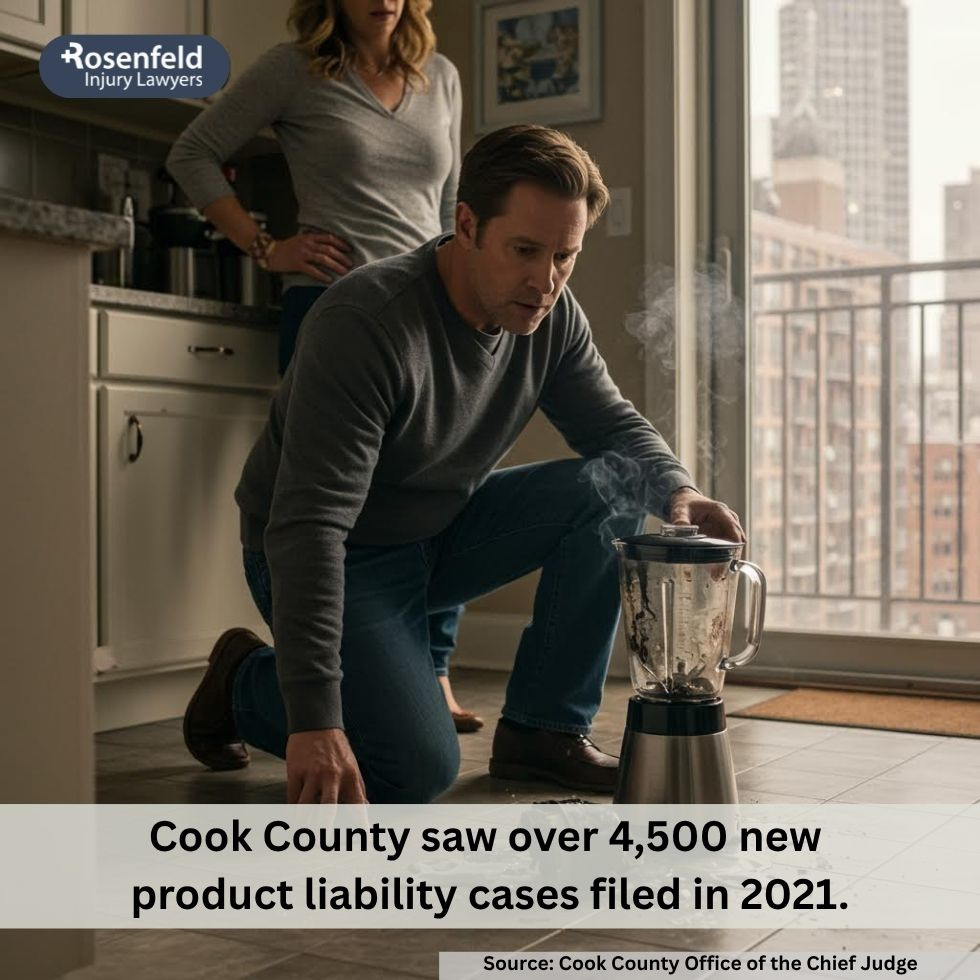
We offer a free consultation to review your case and explain your rights under Illinois personal injury law.
$11,000,000 Settlement — Factory Press Amputation
Carlos was working at a manufacturing plant on Chicago’s South Side when a defective punch press crushed and amputated his dominant hand. Our investigation revealed that the manufacturer had received several prior complaints about the same machine, but never warned the employer or issued a recall. The severity of Carlos’s permanent injury, combined with the company’s ongoing failure to address a known hazard, significantly increased the value of this product liability claim.
$10,145,000 Settlement — Seat Belt Failure
Lauren suffered spinal cord injuries after a rear-end collision on I-90, which ejected her from her car. Despite being buckled in, the seat belt failed to restrain her. Our legal team uncovered design flaws in the belt mechanism and internal communications showing the manufacturer knew of these risks but did nothing. Her lifelong mobility limitations and the company’s prior knowledge were key factors in the value of this lawsuit.
$7,300,000 Settlement — Ladder Collapse
While performing soffit repairs on a home in Oak Park, Thomas fell more than 30 feet when his extension ladder collapsed without warning. Engineering analysis showed a defect in the rung connections, and the same model had been involved in prior incidents. Thomas suffered a collapsed lung, liver damage, and multiple broken ribs. His long recovery and the ladder company’s failure to address similar claims added significant value to this lawsuit.
$5,250,000 Settlement — Shop Class Saw Injury
Maya, a high school student enrolled in a CPS shop class, sustained catastrophic hand injuries when a circular saw kicked back. The saw was missing a critical safety guard, and we proved it had been part of a national recall. However, the school never received proper notice. Maya’s young age, the permanent damage to her hand, and the manufacturer’s failure to provide adequate warnings contributed to the outcome of this defective product case.
$5,000,000 Settlement — Harness Failure
James, a window washer working on a high-rise in downtown Chicago, fell three stories when his safety harness failed during routine maintenance. The harness, sold by a major safety equipment supplier, had a defective locking mechanism. Our investigation showed the flaw was linked to similar falls in other cities. James sustained compound leg fractures and required multiple surgeries. The harm caused and the company’s failure to fix a known issue shaped this product liability claim.
At Rosenfeld Injury Lawyers, our team of top-rated Chicago personal injury attorneys has earned national recognition for results in complex injury cases.
With over $450 million recovered for clients, including multimillion-dollar verdicts and settlements in product liability lawsuits, our track record speaks for itself. Our law firm has been recognized by Super Lawyers, the Million Dollar Advocates Forum, and maintains a 10/10 rating on Avvo.
We have extensive experience holding major corporations and manufacturers accountable for dangerous consumer products, defective equipment, and faulty safety devices. Our team combines legal skill with a deep understanding of product liability law, positioning us among the best Chicago product liability lawyers for injured consumers.
At Rosenfeld Injury Lawyers, our Chicago product liability lawyers have extensive experience handling claims involving a wide variety of unsafe consumer and industrial products.
We represent workers injured by heavy machinery and industrial equipment, including punch presses, nail guns, and forklifts. These machines often cause devastating injuries when critical safety features are missing or malfunctioning.
We handle product liability claims involving dangerous household appliances—such as space heaters, ovens, and dryers—that pose risks of fire, electrocution, or explosion.
Our firm has successfully represented clients harmed by defective medical devices and unsafe pharmaceuticals, including implanted devices and recalled medications. Auto defect cases are another area of focus, including faulty seat belts, tire blowouts, and defective airbags that fail in car crashes.
We take on cases involving toxic and hazardous consumer products, such as poisonous cleaners, cosmetics containing harmful chemicals, and lithium batteries that overheat or explode. We also pursue claims involving children’s products, such as toys with choking hazards, defective car seats, cribs that collapse, and walkers that violate federal safety standards.
If a product defect caused your injuries, a Chicago product liability lawyer at our firm is ready to help you pursue accountability and receive fair compensation.
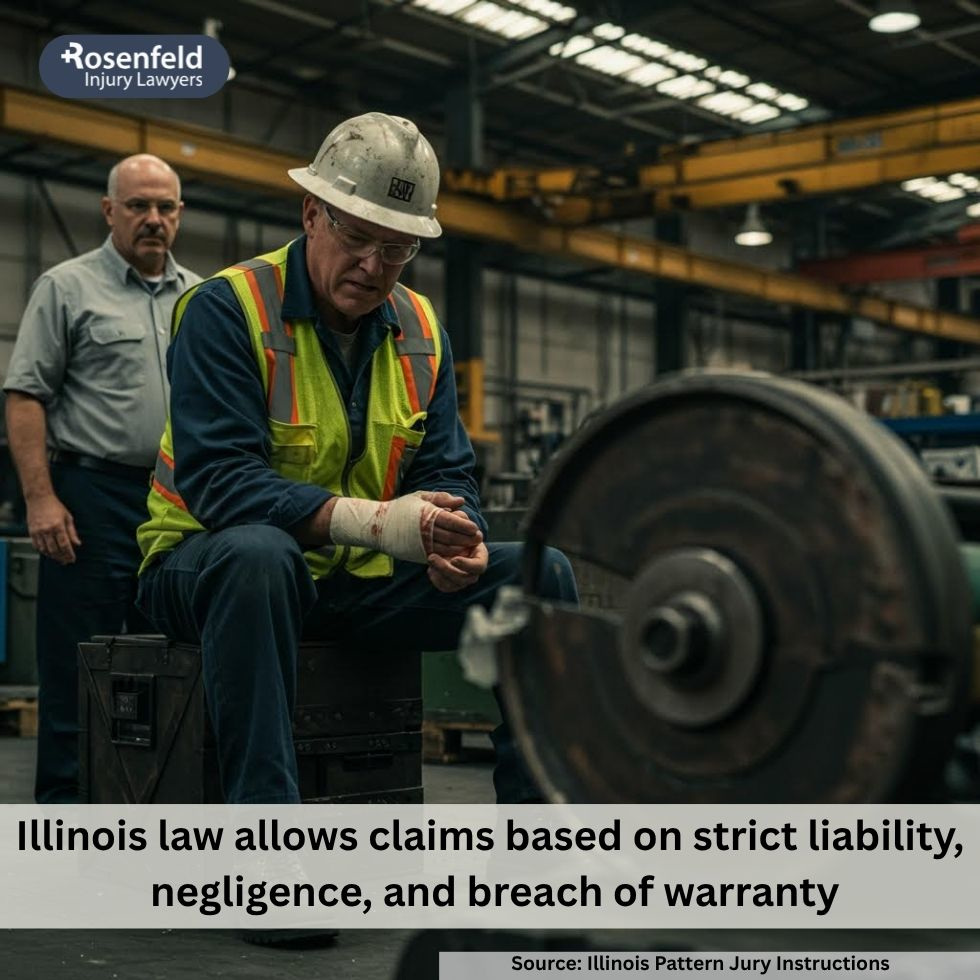
Design defects make a product dangerous from the start, even before it’s manufactured. This occurs when the product’s blueprint creates an unreasonable risk to users, such as a power tool without a proper safety guard or a high chair that tips easily. In these cases, every unit is flawed. We work with engineering experts to show how safer design alternatives could have prevented the injuries caused. Example: Instant Soup Burn Lawsuit
Manufacturing defects happen during production, resulting in a product that deviates from its intended design and poses unexpected risks. This could involve a cracked weld in a ladder, a loose seat belt bolt, or contaminated medication. Unlike design flaws, not every item in the product line is affected. These cases require a skilled lawyer who can trace the issue back to the manufacturing process and prove the defect caused your injury. Example: DermaRite Lawsuit
Some products carry risks even when used correctly. When manufacturers fail to provide adequate warnings, consumers are exposed to serious harm. Examples include medications without side effect labels or cleaning products that don’t mention mixing dangers. Our Chicago lawyers hold companies accountable when missing or unclear warnings lead to severe injuries that could have been avoided with proper communication.
Even safe products can become dangerous if users aren’t given clear directions. Product liability claims often arise when instructions are vague, misleading, or missing entirely. For example, a home exercise machine that doesn’t explain proper setup can lead to falls and fractures. Our legal team builds strong cases by showing that better instructions would have prevented the harm caused.
Mislabeling includes incorrect information about how a product should be used, its ingredients, or its safety features. This is especially common with pharmaceuticals, food items, and cosmetics. A mislabeled allergy medication or baby formula with undisclosed allergens can lead to life-threatening situations. A top-rated attorney at our firm will investigate how the error occurred and fight to hold the responsible party liable.
When companies exaggerate the safety or effectiveness of their products, it creates serious risks for consumers. Marketing defects may hide side effects, promote off-label uses, or claim benefits the product can’t deliver. This false sense of security can lead to improper use and devastating injuries. Our lawyers take aggressive action against manufacturers who put profits ahead of honesty and consumer safety.
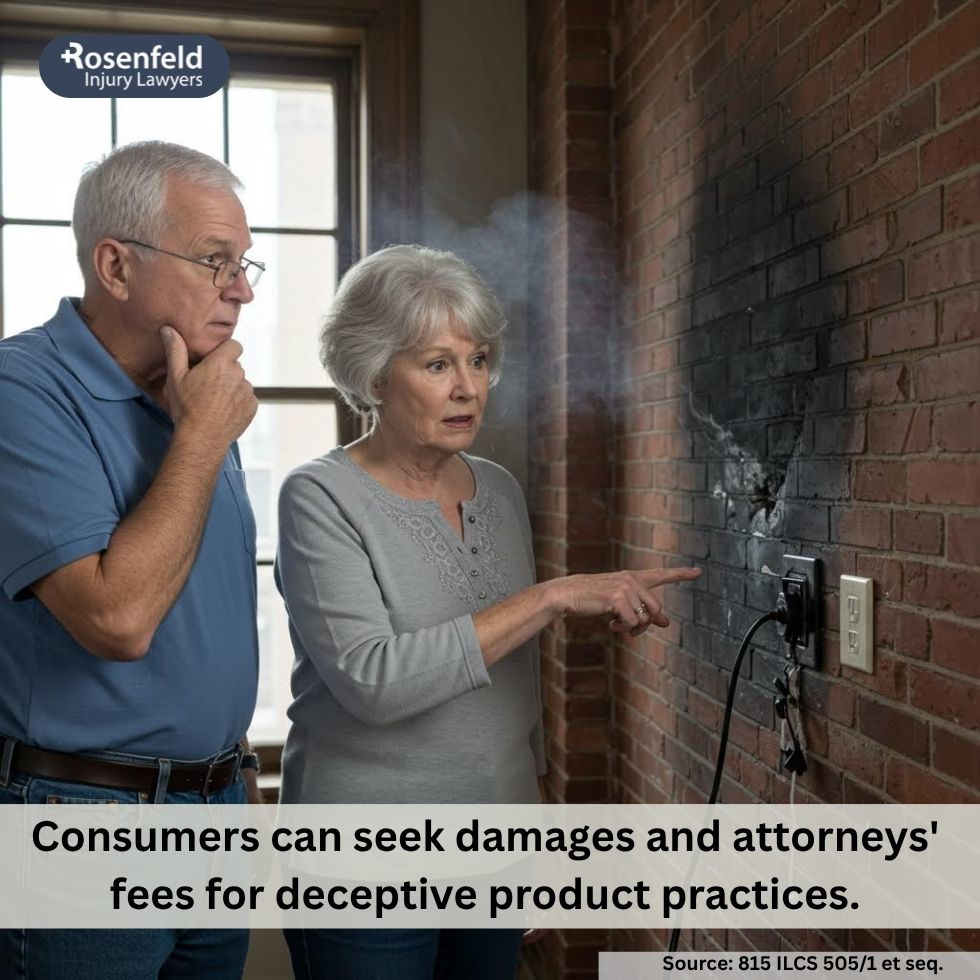
Defective products can lead to devastating injuries, especially when safety features fail or hazards go unaddressed. Amputations and crush injuries are often linked to industrial equipment and machinery lacking proper guards or emergency shutoffs.
Severe burns and explosions can result from faulty wiring, defective batteries, or malfunctioning household appliances. TBIs and spinal cord injuries frequently occur in product liability cases involving auto defects, such as failed airbags or seat belts.
Toxic exposure injuries are another concern, especially with unsafe cosmetics, contaminated food, or defective medical devices. In the most tragic situations, wrongful death may occur due to a dangerous or defective product. Our product liability attorneys understand how these injuries affect every part of a person’s life, and we fight to hold manufacturers and distributors accountable for the harm caused.
Victims injured by dangerous or defective products may be entitled to recover a wide range of damages under Illinois product liability law. Economic damages often include compensation for medical bills, ongoing treatment, rehabilitation, and future care needs related to the injury. Many clients also receive payment for lost wages and reduced earning potential, especially when the injury prevents them from returning to work.
Non-economic damages cover pain and suffering, emotional distress, and the loss of enjoyment of life caused by the injury. These are especially important in personal injury cases involving permanent disability or long-term complications. In wrongful death cases, surviving family members may recover damages for funeral costs, loss of financial support, and loss of companionship.
Our product liability attorneys fight for full and fair compensation in every case. If you’ve suffered because of a faulty product, we’re here to help you secure compensation that reflects the actual impact of your loss.
Based on Law.com’s VerdictSearch, the average product liability payout in Chicago is approximately $23.9 million, while the median award is around $6.38 million. Reported verdicts and settlements range from $10,500 to over $455 million, depending on the facts of the case.
Several key factors influence the value of a product liability claim, including:
Every case is unique. That’s why it’s essential to work with a top product liability lawyer who can evaluate your situation and pursue the maximum recovery under Illinois law. We offer a free case review to help you understand your options.
A pipe elbow ruptured at a Citgo refinery near Chicago, leading to a fire that destroyed its crude oil unit. Citgo and PDV Midwest alleged that the elbow was manufactured without sufficient chromium. A jury awarded $387 million, apportioning 45% fault to the manufacturer, Babcock & Wilcox. Due to a pretrial agreement, the manufacturer’s uninsured liability was capped at $50 million. This case focused on a manufacturing defect and failure to meet industry standards, resulting in massive property and business interruption losses.
Truck driver Robert Montagano suffered bilateral leg amputations after 3,400 pounds of steel tubing fell during unloading. The jury awarded $95.4 million, assigning fault to both the loader (Metal-Matic) and the unloader (Leading Edge). Due to a pretrial high-low agreement, Leading Edge paid $8.8 million. Metal-Matic, found more than 25% at fault, became liable for the remaining $77.1 million. The total recoverable damages reached $86.4 million, including pain, suffering, lost income, medical costs, and consortium damages.
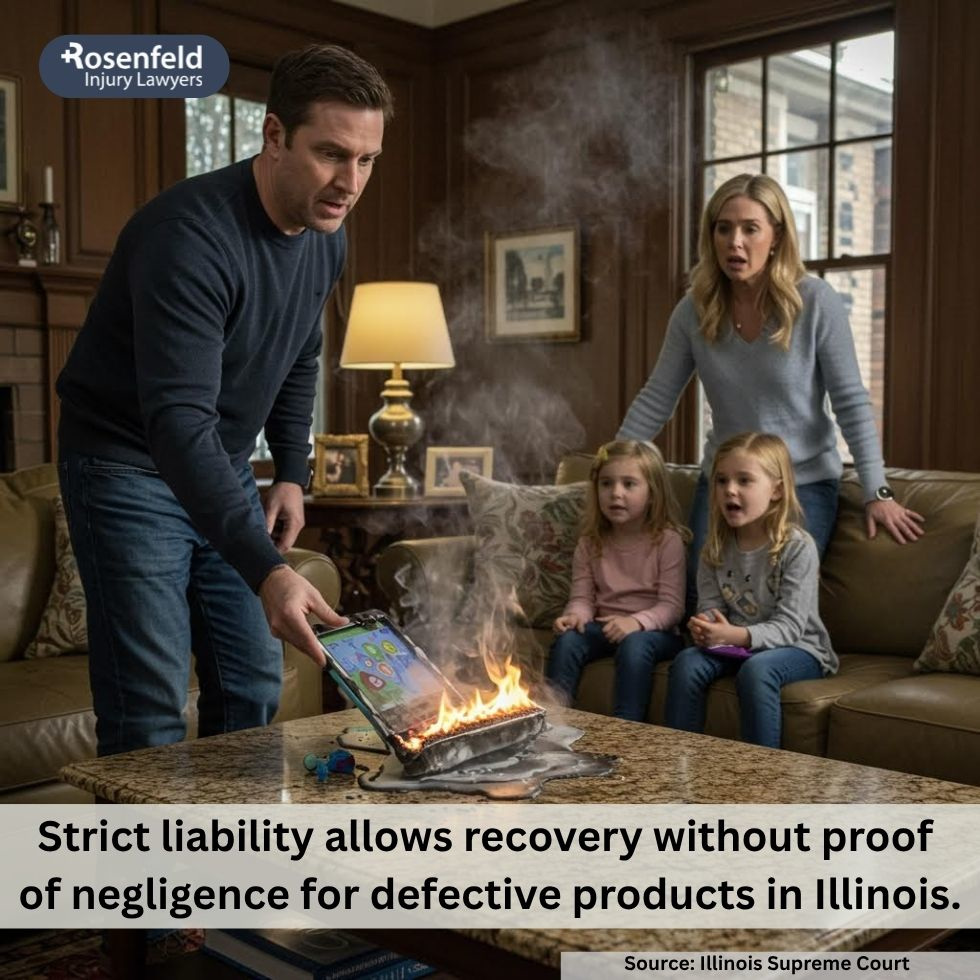
Bruce Torgerson died of mesothelioma after working with asbestos-containing products from John Crane Inc. His estate claimed the company failed to warn about known cancer risks. A jury awarded $40.75 million in damages, including pain and suffering, emotional distress, and loss of services and society for his surviving family. Despite defense claims about alternative exposure sources, the jury found John Crane responsible for supplying unreasonably dangerous products without proper warnings.
Gerardo Solis developed bronchiolitis obliterans, a disabling lung disease, after prolonged exposure to diacetyl used in butter flavoring. He sued BASF Corp., alleging design defect and failure to warn, and presented evidence of undisclosed internal studies confirming the chemical’s danger. The jury awarded $32 million, reduced to $30.4 million due to 5% comparative fault. The award included medical costs, pain and suffering, lost wages, and future care for a terminal condition linked to toxic exposure.
Scot Vandenberg developed quadriplegia after falling from an unguarded upper deck of a luxury yacht. He reached a $2.37 million settlement with the boat owner and later accepted a $25 million settlement from the manufacturer, Brunswick, during jury deliberations. Although the jury ultimately returned a defense verdict, the court enforced the settlement agreement. The total recovery of $27.4 million reflected the catastrophic nature of his injuries, permanent disability, and lifelong care needs.
Product liability cases often involve complex evidence, including engineering failures, design flaws, and long-term medical effects. Successfully proving that a dangerous or defective product caused serious injury requires expert testimony, accident reconstruction, and a detailed analysis of how the product failed. At Rosenfeld Injury Lawyers, our Chicago personal injury attorney team has extensive experience litigating in Cook County Circuit Court and has gone head-to-head with major manufacturers and national defense firms.
We understand how to build strong cases backed by credible technical and medical experts. Whether the issue involves a manufacturing defect, a lack of adequate warnings, or a design defect, we know how to hold companies accountable. If you’ve been harmed by a faulty product, a top-rated Chicago product liability lawyer from our team can help you protect your rights and pursue the financial compensation you deserve.
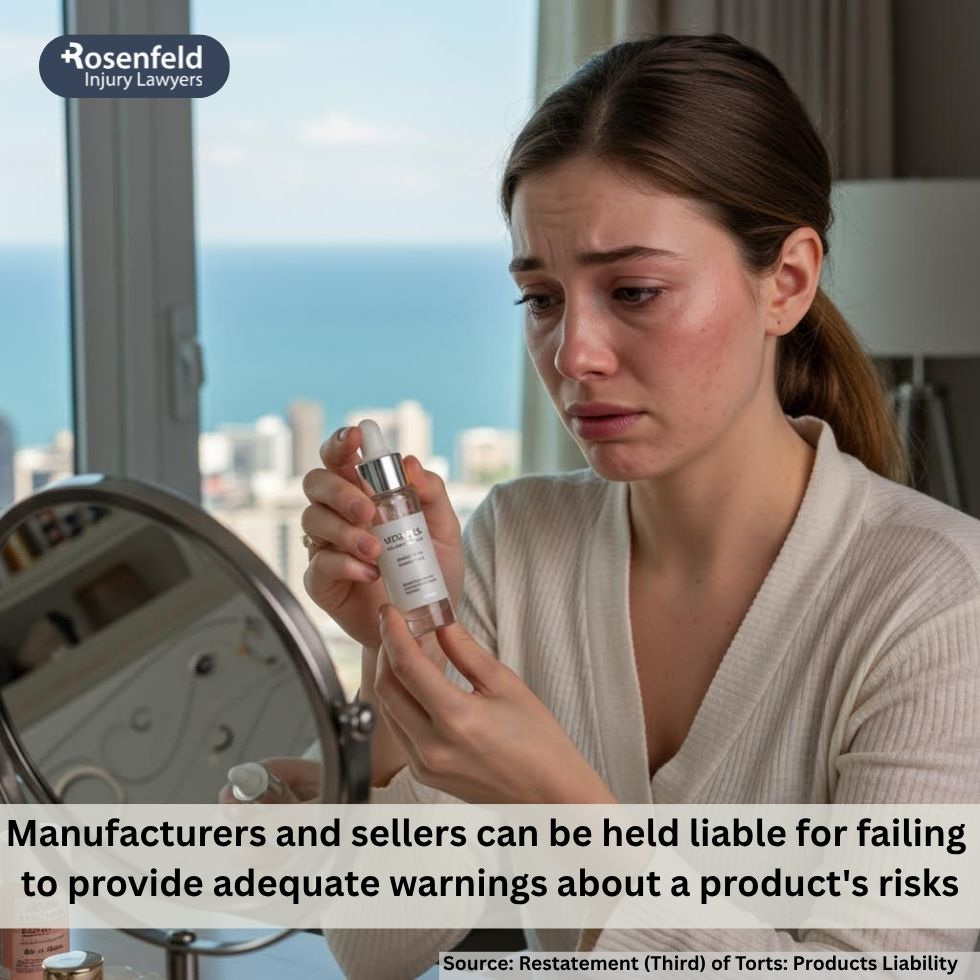
According to ConsumerShield, thousands of product liability cases are filed across the U.S. each year. Between 2018 and 2022, the number of filings has remained consistently high, with notable increases in certain years. In 2018, there were 4,980 cases filed, followed by 5,110 in 2019. That number rose to 5,580 in 2020, and dipped to 4,260 in 2021. In 2022 alone, 5,826 product liability cases—excluding multidistrict litigation (MDL) associated cases—were filed in federal district courts.
According to InsuranceJournal, the Southern District of Illinois saw the highest number of filings over those five years. Between 2018 and 2022, federal courts awarded $214 million in approved class action settlements and $201 million in punitive damages, reflecting the significant financial stakes in this area of litigation. For those injured by dangerous or defective products, having a top Chicago product liability lawyer is essential for pursuing meaningful recovery.
Product liability accidents can happen anywhere defective goods are used, but certain areas in and around Chicago see them more frequently. Industrial and manufacturing plants on the South and West Sides—such as those in Pullman, Little Village, and Cicero—often involve serious injuries tied to defective machinery and unsafe equipment.
In retail stores and distribution centers located in neighborhoods like Back of the Yards, Gage Park, and Bedford Park, workers and consumers face risks from faulty shelving units, malfunctioning equipment, or unsafe packaging.
Many incidents also occur in homes across the city, including areas like Bronzeville, Jefferson Park, and Hyde Park, where dangerous household appliances or defective consumer products lead to fires, shocks, or other injuries.
Lastly, hospitals and clinics in neighborhoods like Streeterville, Oak Lawn, and Near West Side see product failures involving medical devices or recalled pharmaceuticals, sometimes resulting in life-threatening outcomes. Wherever these accidents happen, a Chicago product liability lawyer can help you understand your rights.
Illinois courts follow § 402A of the Restatement (Second) of Torts, which imposes strict liability on sellers who place a product into the stream of commerce in a defective condition unreasonably dangerous to users or consumers. Liability applies if the product reaches the consumer without substantial change and causes harm.
In the case of Sollami v. Eaton, 201 Ill. 2d 1 (2002), the Illinois Supreme Court clarified how strict liability applies in product liability cases. The court held that a manufacturer can still be held responsible if a product’s risks were not obvious, even when used as intended. This decision emphasized that companies must consider foreseeable uses and provide adequate warnings for potential dangers.
Under 735 ILCS 5/13-202, victims generally have two years from the date of injury to file a product liability lawsuit involving a defective product. Missing this deadline can bar your right to seek compensation, so it’s essential to speak with a Chicago product liability lawyer as soon as possible to protect your rights.
Multiple parties involved in bringing a consumer product to market may be held responsible in a product liability lawsuit. This includes product designers who create unsafe designs, manufacturers responsible for manufacturing defects, and distributors who supply the dangerous product. Wholesalers and retailers may also be liable for selling a faulty or defective product without providing adequate warnings.
In some cases, installers can be held accountable if improper installation contributed to the harm. A Chicago product liability attorney can help determine which parties may be held liable and guide you through your available legal options.
In a product liability claim, defendants often raise several common defenses to avoid responsibility. One is comparative negligence, where they argue the victim’s own actions contributed to the injury. Another is the misuse of the product, claiming it wasn’t used as intended.
Assumption of risk may be raised if the user knew the risks and chose to proceed anyway. Some manufacturers also cite compliance with federal regulations, suggesting that meeting safety standards shields them from liability.
Our Chicago personal injury attorney team is experienced in challenging these arguments. We work with industry experts, analyze safety data, and review company records to demonstrate how the dangerous or defective product caused preventable harm.
Whether the issue involves a design defect, manufacturing defect, or inadequate warnings, our legal team builds a strong case to establish liability and pursue compensation for your injuries suffered. A skilled product liability lawyer can make a difference in how these defenses are addressed.
To build a strong product liability claim, start by preserving the defective product that caused your injury. Do not attempt to repair or discard it, as it serves as key evidence. Collect photos, videos, receipts, and any packaging or instructions that came with the item. Seek prompt medical care and keep detailed records of all medical expenses and treatments related to your injury.
Contact a Chicago product liability lawyer as soon as possible. Early involvement allows your attorney to coordinate expert analysis, secure evidence, and help you take the proper steps toward obtaining fair compensation.

Our Chicago product liability lawyers handle every stage of your case with focus and experience. We investigate all aspects of the defective products, including potential design defects, manufacturing defects, and improper warnings or labeling issues. Our law firm works closely with engineers, medical professionals, and product safety experts to uncover how the faulty product caused harm.
We also negotiate directly with the product manufacturer, distributors, and the insurance company to seek fair compensation for medical bills, lost wages, and other losses. If a settlement is unfair or denied, our product liability lawyers are fully prepared to take your case to trial.
Whether your case involves dangerous products, medical devices, or consumer products, we aim to hold the responsible party accountable and help you secure compensation through the appropriate legal process.
Strict liability means a manufacturer or seller can be held legally responsible for a defective product that causes harm, even without proof of negligence. If the product was unreasonably dangerous and led to injury during normal use, the responsible party may owe financial compensation for the harm caused.
To pursue a product liability claim, you’ll need to establish four key elements: duty, breach, causation, and damages. First, show that the product manufacturer or seller had a legal duty to provide a safe product. Then, demonstrate that they breached this duty by distributing faulty or defective products—whether due to a design defect, manufacturing defect, or failure to provide sufficient warnings. You must also prove that the defect directly caused your injury and resulted in measurable harm, such as medical bills, lost wages, or property damage. A skilled product liability lawyer can help gather evidence and establish liability.
You should not accept any offer without reviewing it with a Chicago product liability lawyer. Insurance companies often offer less than what a claim is worth. An attorney can evaluate the offer, ensure it covers all your losses, and negotiate for the maximum recovery you’re entitled to under product liability law.
A class action is a single lawsuit filed on behalf of a large group of people harmed by the same dangerous product. These cases are used when multiple victims suffer similar injuries from a defective product. Class actions help consolidate claims and can pressure companies to accept responsibility.
An MDL, or multidistrict litigation, consolidates similar product liability lawsuits from different courts into one federal court for pretrial proceedings. This streamlines complex litigation involving dangerous products or medical devices. Unlike class actions, each plaintiff in an MDL retains an individual claim and can seek separate compensation.
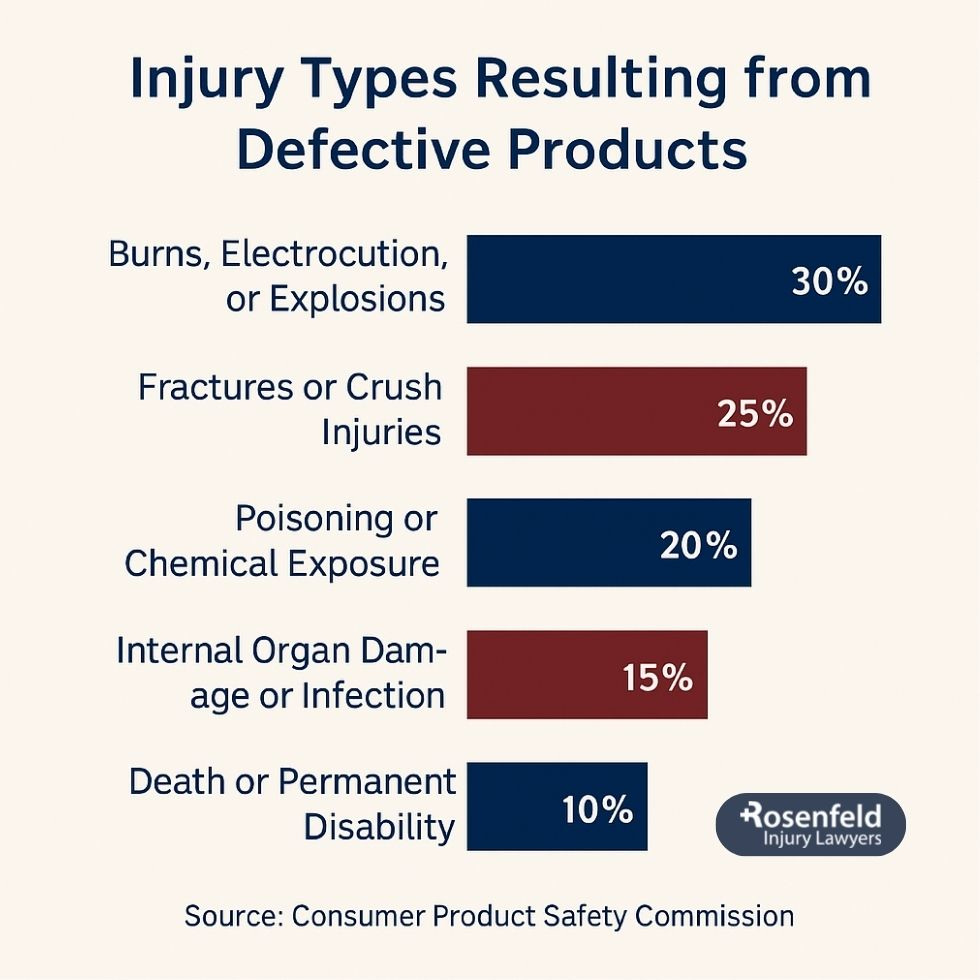
Any person injured by dangerous or defective products—including consumers, workers, or bystanders—may file a product liability claim in Chicago. This includes cases involving medical devices, motor vehicles, or everyday products. If the incident resulted in a fatality, surviving family members may pursue a wrongful death claim. A Chicago product liability attorney can assess your situation, explain your rights under Illinois law, and guide you in holding the responsible party accountable.
Our Chicago product liability lawyers work on a contingency fee basis. That means you pay nothing upfront, and no legal fees are due unless we win your case. We also offer a free consultation to review your case. This allows injured clients to pursue compensation without added financial stress after serious injury or product-related harm.

If you or a loved one has suffered harm due to a faulty or defective product, Rosenfeld Injury Lawyers is here to help. Our lawyers have a proven track record in handling complex product liability claims involving manufacturing defects, design defects, and inadequate warnings. We offer a free consultation to review your case and explain your legal options.
Call us at (888) 424—5757 or fill out our contact form to speak with a skilled product liability lawyer dedicated to protecting your rights and helping you move forward with confidence.
Our downtown office, near the Richard J. Daley Center, Dirkson United States Courthouse, and the Chicago Workers’ Compensation Commission, offers convenient access from Aurora, Joliet, and Waukegan via I-90, I-94, and I-290.
225 W Wacker Dr #1660
Chicago, IL 60606
Phone: (847) 835-8895
We also serve clients from Champaign, Elgin, Peoria, Schaumburg and throughout Illinois.
All content undergoes thorough legal review by experienced attorneys, including Jonathan Rosenfeld. With 25 years of experience in personal injury law and over 100 years of combined legal expertise within our team, we ensure that every article is legally accurate, compliant, and reflects current legal standards.